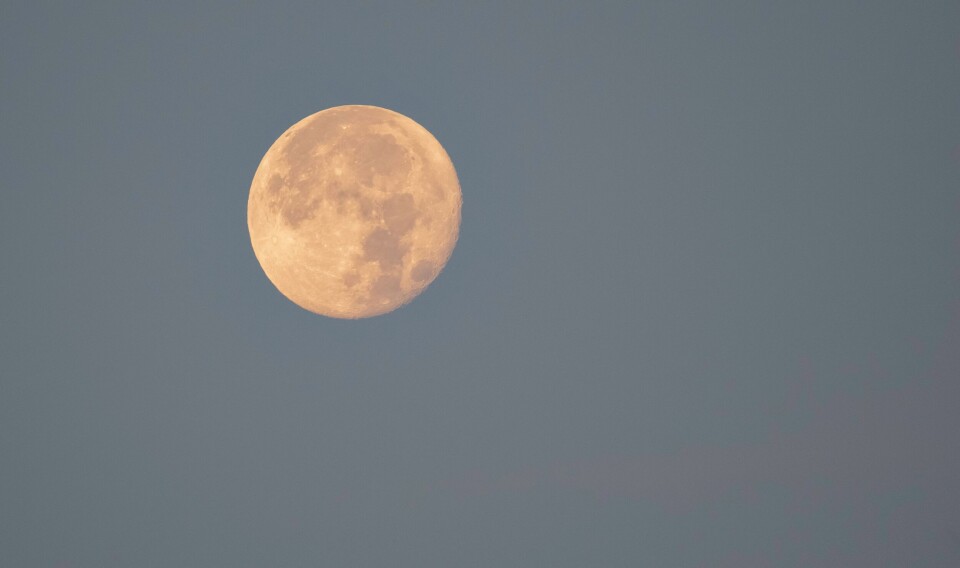-
Snake measuring up to five metres reported in Vendée
It was apparently run over by a car last week but is yet to be found
-
Mercosur trade deal explained: why French farmers are angry and will it pass?
A decisive vote is due on Friday December 19. Unions say if it passes there will be major disruption
-
Mutuelle fees set to increase in France next year: see by how much
New taxes on mutuelle companies denounced by insurance federation
Monday’s ‘Buck supermoon’: What is it and where is best to view it?
Although visible to the naked eye, the moon is best observed through binoculars or a telescope in a place with low light pollution

The first of four ‘supermoons’ this summer will be visible to stargazers in France on Monday (July 3) evening.
NASA says the ‘Buck supermoon’ (Lune de Cerf) is so named because, according to the Farmers’ Almanac, it is at this time of year that male deer antlers are in full growth. Some Europeans call it the ‘Hay supermoon’ due to it coinciding with haymaking season.
Although Monday is when the moon will be at its strongest, ‘Buck Supermoon’ is the general name given for the 28-day cycle of the current moon.
The moon will be visible from around 13:40 across France, but it will obviously be much easier to see at night, with the best views happening during the sunset.
Although visible to the naked eye, the moon is best observed through binoculars or a telescope, in a place with low light pollution.
Closer to Earth
Despite being named a ‘supermoon’, some astronomers are downplaying the event.
“It's very pretty to look at, but there's nothing exceptional about it,” said Gilles Dawidowicz, vice president of the Astronomical Society of France.
Aside from being in its full moon stage, the reason it is classed as a ‘supermoon’ is due to the moon’s shorter distance to the Earth.
The average distance between the moon and the earth is 384,400 km, but on Monday, it will only be 361,934 km.
This – known as the moon’s perigee – is also coinciding with a syzygy, where the sun is located opposite the moon, and so its rays bounce off the moon, making it seem brighter.
Although these two combine to create a ‘supermoon’ (scientists use the term perigee-syzygy), it does not mean the moon is any larger, just closer and brighter than usual.
Views like a ‘pretty cocktail’
Due to the syzygy, the best views are to be found when the moon and sun are in direct opposition to each other.
“At the moment of moonrise and sunset… there is a magnifying effect with the layers of the atmosphere," said Mr Dawidowicz.
In France, the sunset should happen between 21:30 and 22:00 tonight (you can check online to find the exact time in your area), and this is when it will be best to view the moon.
A place with little light pollution – Mr Dawidowicz suggests “a seashore or meadow” – will be the best place to see the supermoon, and if possible, with stargazing equipment.
“Combined with the colours of the sun, it makes a pretty cocktail, a wow effect,” added the vice president.
Alongside today’s, the following supermoons visible in France over the summer will be:
- ‘Sturgeon supermoon’, August 1
- ‘Blue supermoon’, August 31
- ‘Harvest supermoon’, September 29
The Blue supermoon will be the year’s biggest, with the satellite only 357,344 km from Earth.
Your ‘supermoon’ photos
Are you planning on taking any photographs of Monday’s supermoon from France? If so, we would love to use some of them in an article on Tuesday.
Please send your best ones to news@connexionfrance.com and specify where it was taken and who we should credit.
Related articles
Amateur photographer’s shot of Dordogne skies sparks NASA interest
Inside France’s ‘UFO Bureau’ - ‘we explain what people have seen’
























